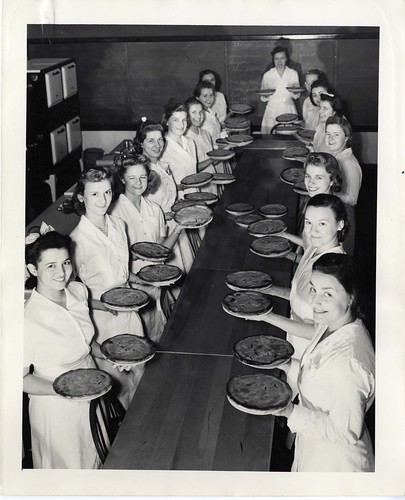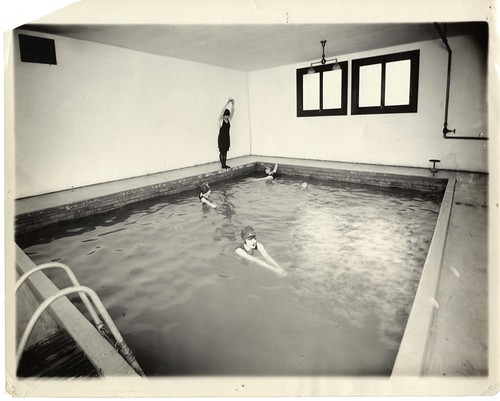UMW’s centennial is on the Flickr bus!

As 2007 comes to a close, the University of Mary Washington’s centennial year is set to begin. There has been much preparation for the centennial festivities, and the occasion has in many ways helped the university to focus on the importance of a digital memory for the institution more broadly. The Division of Teaching and Learning Technologies has found itself working alongside several other departments (such as the UMW Libraries, Publications, Public relations, and various others) to create a digital archive of images for the centennial celebration, which is now up and running and can be viewed here.
Jerry Slezak astutely managed this project, and he and the rest of the committee are responsible for all the heavy lifting. I just waited patiently as the archive became more and more robust with images and metadata to push for a little Web 2.0 flare.

With the committee’s approval, we are trying a little experiment with a number of the centennial images we have scanned. We have almost 1,000 images in the UMW Digital Archive, which is effectively an extension of the library catalog for digital resources. We are now taking images from this larger collection and making them available on the UMW Centennial Flickr site. Each time we make a new image available to the public on Flickr–which is a regular occurrence–it is blogged through the UMW Centennial Photo blog (proudly powered by the world famous UMW Blogs 😉 ).
Now, one might ask, “Why three times the work? Why put it in a digital archive/catalog, upload it to Flickr, and then blog it?†Fair question, and I would answer in response, “Because it’s an experiment, Hondo.†In fact, it has been a rather quiet experiment that has been going on regularly for almost three months now. Since the middle of October we have been regularly releasing images from the centennial collection to the public on Flickr, then simultaneously blogging it on the UMW Centennial blog. There are now 54 images available to the public and, if all goes well, this daily five-minute tradition will continue throughout the centennial year.

The logic behind utilizing a more sophisticated archive, Flickr, and a blog is that by putting these images on Flickr and subsequently blogging them, they become that much more easily found through search engines like Google. In turn, the Flickr images and the blog posts all link back to the original on the official UMW Archive which enables people to find the originals with all ther pretinent metadata through different avenues.
So, if you are working under the assumption that a large amount of Mary Washington alumni are going to search for information about the centennial on Google and that we want the work that has been done to be prominent, then the Flickr account and the UMW Centennial blog afford this visibility. When doing a search for UMW Centennial on Google both sites show up in the top ten.
And while I am increasingly convinced that is quite important to make the fine work being done at UMW more visible for those interested, the larger reason behind this experiment is to make these images available to alumni so that they can connect with the centennial experience no matter where they are. Whether by commenting on images or even sharing some of their own memories with us through Flickr comments, the blog, or by joining the UMW Centennial Flickr group (which would additionally allow them to share their images with us!), the diasporic lumni of Mary Washington can be a part of the celebration using freely available digital tools.
I’m not sure how this experiment will turn out, but thus far we have over 2,000 views on the UMW Centennial blog alone — and the centennial year hasn’t even started yet. The next year will surely tell whether or not the extra work was justified, but I have to admit that even if it didn’t bear fruit it has really been a ball being able to see so many of these unbelievable photographs.
I mean who knew there was a pool in the basement of Monroe Hall back in the day?

And how could the Raccoon coat worn by a proud member of the Grammar Group in 1931 not fascinate me?

Or a more recent vision of Goth love on campus?

I mean, c’mon, a project like this is unbelievably enjoyable. What’s more fun then spending a few minutes each day trying to imagine what was, while simultaneously wondering what might be?


It’s interesting to see these photos as a quasi-alumna of the old MWC. I attended for a whopping single semester in 1997 before culture shock, tripled dorm rooms, stifling conservative politics and Christian evangelism, and a couple episodes of food poisoning from Seacobeck sent this Southern Californian fleeing for more progressive climes.
The photos are especially interesting because the school from which I did eventually graduate (Grinnell) celebrated its 150th (in a huge, over-the-top way) while I was a student there. I feel very connected to that institution’s history, and feel very proud that its past is in some way my history. Looking at the UMW/MWC photos makes me think, “Wow, that was almost my history.” Part of me wants to say, “Rock on–awesome photos of (strong?) women from the early part of the 20th century.” The other part of me (the cultural historian and former student) feels queasy for various and complex reasons when I look at the photos.
That said, I’m glad that UMW is making centennial images widely available. My current institution (UC Davis) is celebrating its centennial next academic year, and I’d love to see it take a page from UMW’s approach in posting photos on Flickr and encouraging alumni comments.
Leslie,
This comment in many way affirms the experiment. The idea, at least for me, is not to mummify in an online sepulcher, but rather to place it in some kind of discursive formation around the history in question. It’s pretty easy to dismiss an institution as conservative, or even progressive for that matter, but its much more interesting to place this history with a more fluid space that opens up these experiences, however banal or extraordinary, to many voices.
You contribution here in many ways affirms this, and suggest that at least in terms of the digital age Mary Washington has got some new, and potentially very interesting, ways of thinking about its past — and what is more important to the South than its past, despite all its myriad problematics.
Pingback: Library of Congress Images on Flickr | bavatuesdays